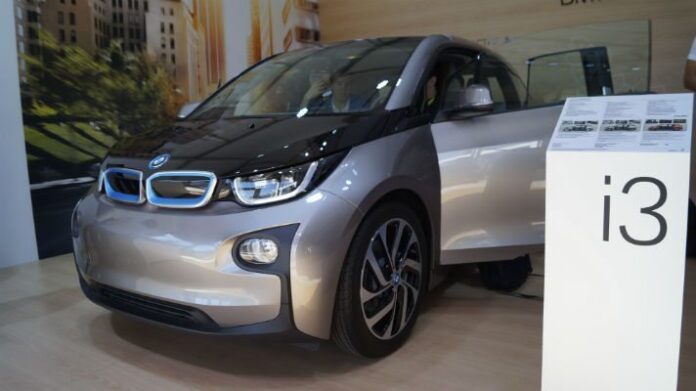Hot out of CES this year, self-driving cars were making lots of news and turning heads on the streets around Las Vegas. It seems the advancements of autonomy in automobiles are coming faster and faster, and many of them are out of the labs and one-off prototypes, and into real commercially available cars, which can be bought in showrooms this year. What are the reasons for this acceleration of progress, and what is the state of affairs in autonomous driving?
The reasons for the surge in SDC news are many, and are the result of the confluence of many technological trends.
1) There has actually been over three decades of slow and steady progress that underwrites the current surge in self-driving cars. Starting with simple mechanical enhancements like automatic transmissions, rolling through anti-lock brakes, stability control, cruise control, adaptive cruise and lane-departure warnings. Each of these has brought us closer today, without us even realizing the long-term impact.
2) Moore’s Law. The Intel founder’s prediction that processing power will double every two years has proven very durable. Now, the amount of processing power that a carmaker can feasibly install in a production car is staggering. Nvidia, provider of chips for such carmakers as Audi and Tesla, is currently promoting its Tegra X1 chip, with supercomputer-grade GPU power, for working with visual data. The Tegra X1 is capable of powering autonomous driving by aggregating and making sense of data from up to 12 cameras and various other sensors.
3) Even though we humans tend to conceptualize innovation as linear, the pace of technological development is exponential. And the self-driving car has been many years in the works and has now gained significant momentum. Progress is occurring faster than ever.
4) Other trends, such as progress in wireless networks, cloud computing, mobile OS refinement, the “Internet of Things,” touch-screen displays, high-resolution cameras, sensors, etc. all add fuel to the fire of autonomous driving.
We all appreciate how an SDC may alleviate the monotony of some daily driving. But more importantly, SDC also has the advantage of promising to reduce the 30,000-plus fatalities seen on U.S. roads each year. If aware cars can improve safety, this will be an additional strong force supporting their development.
And the record is quite good. Google’s SDCs have logged over 500,000 miles on public highways without being responsible for one collision. Audi brought a modified Q7 from San Francisco to Las Vegas with all of the highway sections driven by the car itself. Then the car made the last roll up to the keynote stage with no driver at all. Many carmakers were showing cars that can self-park, and be summoned back, either in a parking structure or in a roadside parking spot.
But thus far, most SDCs exhibit a sort of “donut hole” problem – solving the easier-to-predict freeway driving challenge and the low-speed park-yourself-in-the-garage challenge. But SDCs still have a gaping hole in the middle, a glaring weakness with urban driving.
Urban driving is the most challenging, because it lacks the structure of the freeway. Obstacles are unpredictable and can surge out of blind nooks, and other vehicles move in a variety of directions. Another problem is that a car in an urban setting needs to share the space and co-exist with many different types of stakeholders, from pedestrians to cats to errant under-inflated footballs to bicycles – all moving at different speeds. The human brain is pretty good at sustaining a real-time awareness of the risks and reacting to sudden changes, and so far, no car has matched that ability. But even if you can beat a self-driving car today, I wouldn’t bet against the machines.
The most advanced commercial cars today have the actuators and motors to control the car, the sensors to see the world, the processing power to make sense of what they see, the routing knowledge of how to reach a destination and the ability to find parking and park. All they lack is the programming – the “intelligence” that a good human driver has. This hurdle will be overcome within 5 years.
Consider this: In 1990, IBM formed a team with the goal of beating a chess world champion. At these early stages, they had a lot of processing power, but needed to add all the intelligence needed to predict future chess moves and calculate their probabilities and values – much like driving, seeing potential risks and acting accordingly. They hired Grandmaster Joel Benjamin to provide the chess intelligence. By 1996, chess Grandmaster Gary Kasparov beat IBM’s Deep Blue supercomputer. Deep Blue got an upgrade and some better training, and then in 1997 it beat Kasparov. We should expect the same or better with autonomous cars – after all, now we have more motivation than “bragging rights.” And like chess, what if each of our cars could drive as well as, or better than, the best human driver?
You take the wheel, Deep Blue. It’s all yours.

